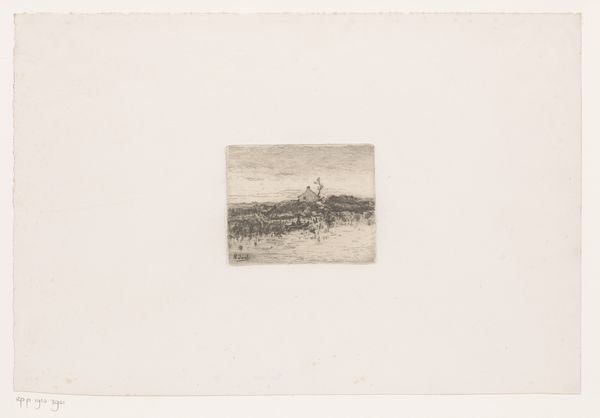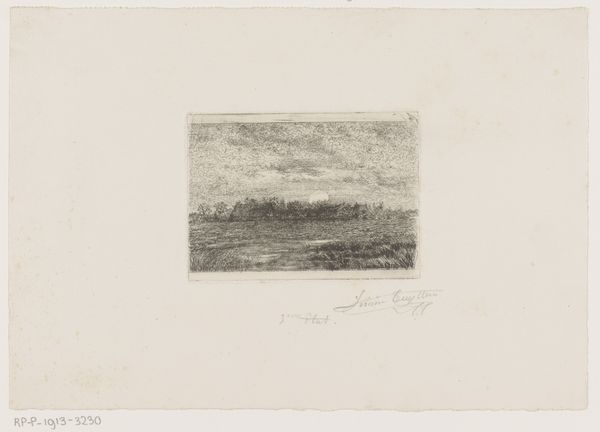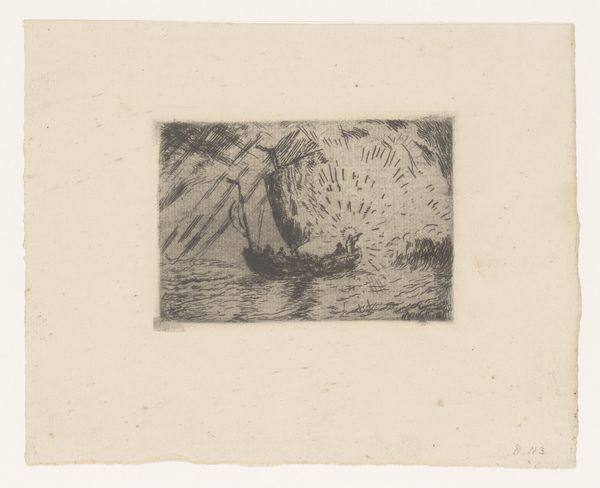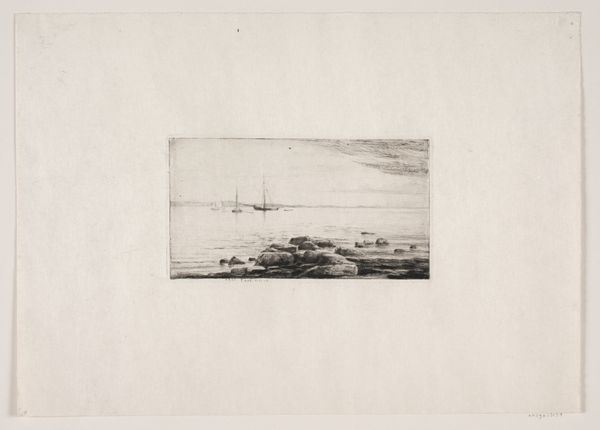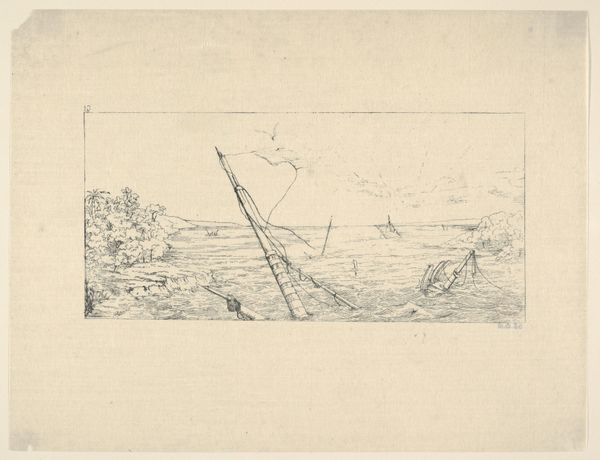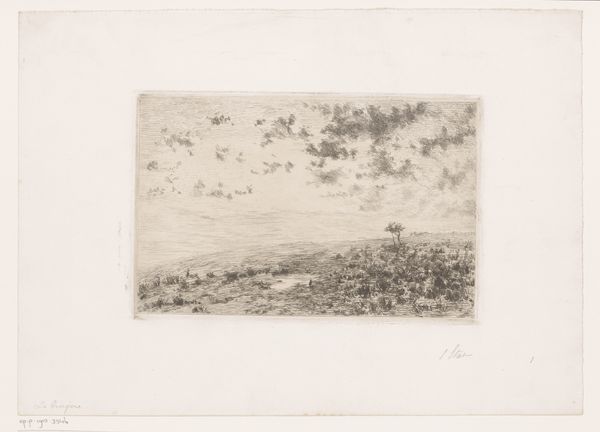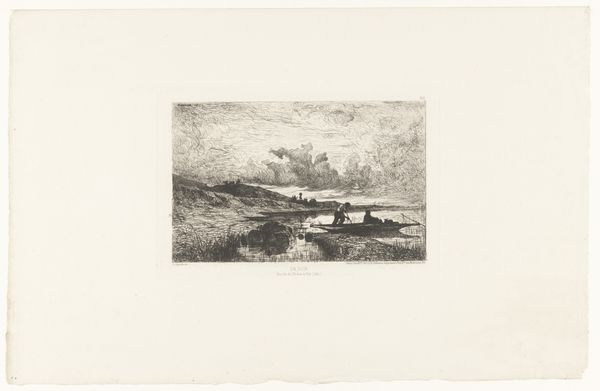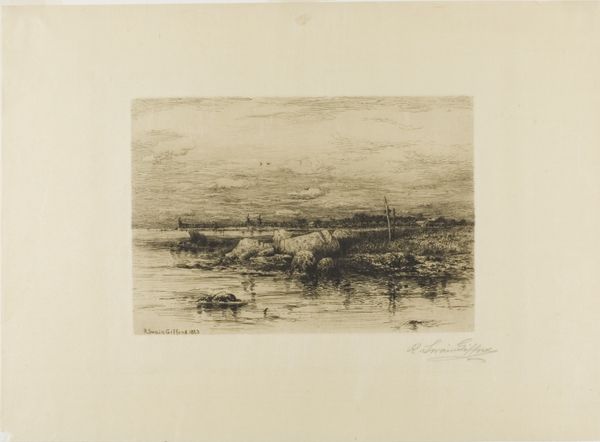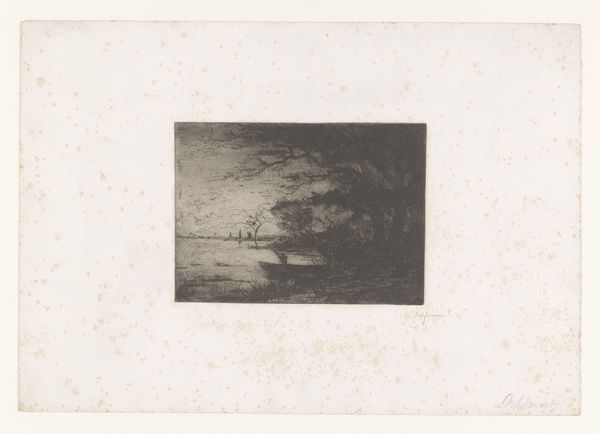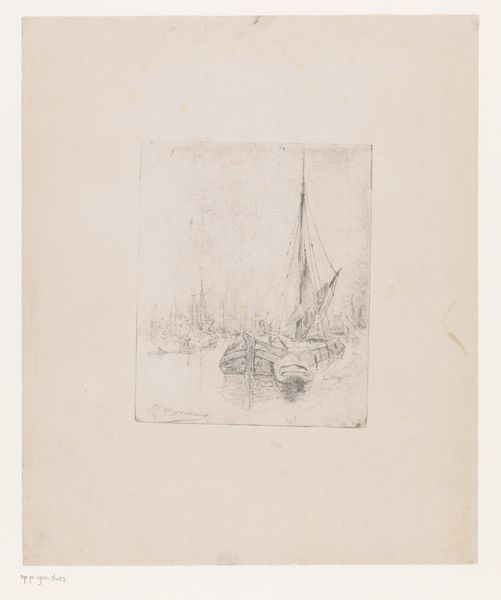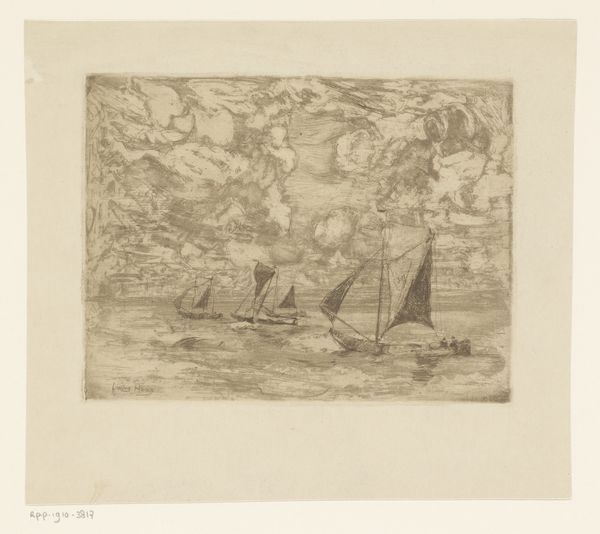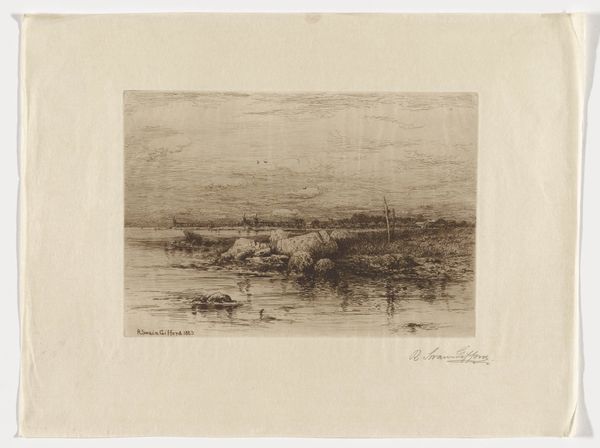
print, etching
# print
#
impressionism
#
etching
#
landscape
Dimensions: height 160 mm, width 209 mm
Copyright: Rijks Museum: Open Domain
This is Wolkenlucht boven water, made by Frans Hens, using etching, in the late 19th or early 20th century. The etching process begins with a metal plate, usually copper or zinc. A waxy, acid-resistant ground is applied, then the artist draws through the ground with a needle, exposing the metal. The plate is then immersed in acid, which bites into the exposed lines, creating grooves. The longer the plate sits in the acid, the deeper the lines become. This particular etching is characterized by a rich, velvety texture in the sky, achieved by the artist’s control over the biting process. This gives the clouds a strong atmospheric presence. The water below is much more lightly articulated. The appeal of the print resides in its replication of this specific view of the landscape, a skill which relies on acute observation, and a complex industrial process. In this way, Frans Hens both embraced and transformed an industrial process to his own aesthetic ends.
Comments
No comments
Be the first to comment and join the conversation on the ultimate creative platform.
